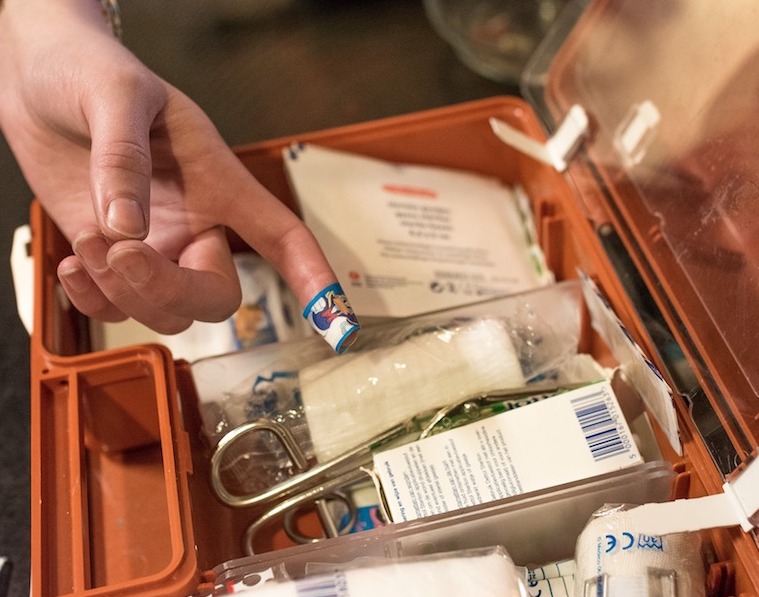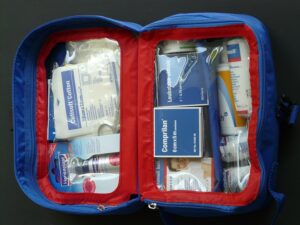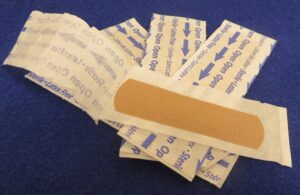First Aid Kits: What You Need To Know

By Keith Pancake
The very nature of an emergency is to be unexpected. By being prepared, you can react appropriately in a calm, efficient manner. Understanding the resources that you have available, and having a process in place for use prior to an incident are key elements of preparation.
 Every field employee should be trained for a situation in which they might need first aid treatment. Recognizing the physical demands of many of our employees’ jobs, ACRT Services requires all company vehicles used in the field to carry a first aid kit, which is inspected at regular intervals. A well-stocked and ready-to-use first aid kit is one of the best ways you can prepare for emergencies. Having access to a first aid kit doesn’t just come in handy for minor injuries, it could be the difference in saving someone’s life – including your own. Here is an inside look at the first aid kit that our employees carry with them daily:
Every field employee should be trained for a situation in which they might need first aid treatment. Recognizing the physical demands of many of our employees’ jobs, ACRT Services requires all company vehicles used in the field to carry a first aid kit, which is inspected at regular intervals. A well-stocked and ready-to-use first aid kit is one of the best ways you can prepare for emergencies. Having access to a first aid kit doesn’t just come in handy for minor injuries, it could be the difference in saving someone’s life – including your own. Here is an inside look at the first aid kit that our employees carry with them daily:
Anatomy of a first aid kit
Our internal first aid kits contain more than 120 items. Each kit contains dressings for wounds, bandages of various sizes, antiseptics, distress items, disposable instruments, and a first aid guide.
 Dressings and bandages: These are the most common items found in first aid kits. Bandages of various sizes – and for specific body parts – are included in the kit, in addition to gauze dressings, a finger splint, and first-aid tape. A cold compress is also included.
Dressings and bandages: These are the most common items found in first aid kits. Bandages of various sizes – and for specific body parts – are included in the kit, in addition to gauze dressings, a finger splint, and first-aid tape. A cold compress is also included.- Antiseptics and over-the-counter medicines: Alcohol cleansing pads, antiseptic towelettes, and first aid cream are included to aid in wound care and pain relief. These items may have expiration dates, and should be monitored during your routine inspection process. As part of our onboarding process, we encourage employees to supplement their kits with medications such as EpiPens or other items specific to their individual needs. This standard location allows coworkers to potentially administer care in the event the employee is under distress and/or unable to care for his or her own needs.
- Distress items: The items in the kit that can be used for distress are often overlooked. Each kit contains an emergency blanket, a “Call 911” flag, a rain poncho, and a light stick. If an emergency situation arises, this equipment can be used to assist emergency professionals locate the individual if necessary.
- Disposable instruments: To assist applying first aid cream and wound care, each kit contains disposable cotton-tipped applicators, a set of plastic tweezers, disposable latex gloves, and safety pins.
- First aid guide: The first aid guide included in the kit covers basic injury care from bruises and insect stings to serious injuries such breathing emergencies and bone and joint injuries. We strongly recommend that all employees review the guide.
Keep it stocked, keep it handy, and use it
As soon as any of the above items are halfway gone, restock to fill your supply. That way, you will never be without items that you need. First aid kits are only useful if they are easily retrieved and stocked with the necessary items to treat injuries. Keep your kit handy in your vehicle, and make sure that used items are always immediately replaced. For minor injuries you may suffer in the field, be sure to use the kit, as these items are at your disposal whenever you need them. As follow up, you should document the treatment with an incident report.
Keith Pancake is a safety manager serving ACRT and Bermex. He has been involved in the UVM industry for 10 years. He is an ISA Certified Arborist and Utility Specialist with a Bachelor of Arts in Geography/GIS from Keene State College and a Bachelor of Science in Wildlife, Fish and Wildlands Science and Management from Tennessee Technological University.


